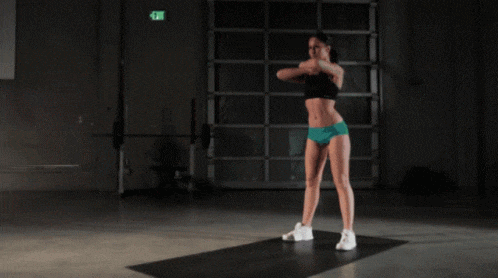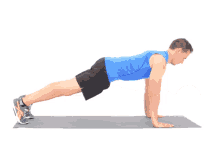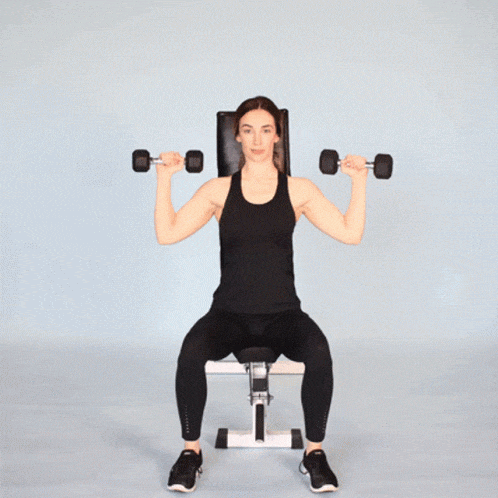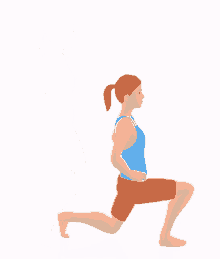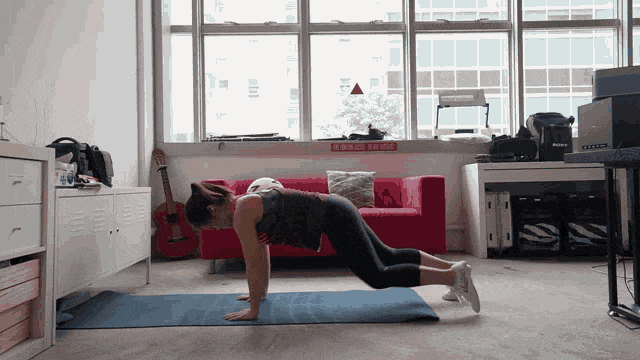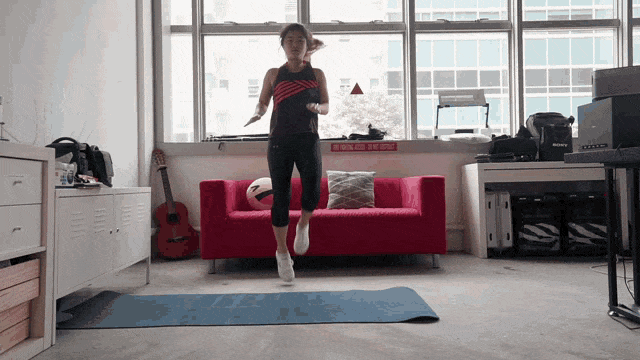Cardio vs. Strength Training: What’s Better for Fat Loss?
Published On : 13th May 2025
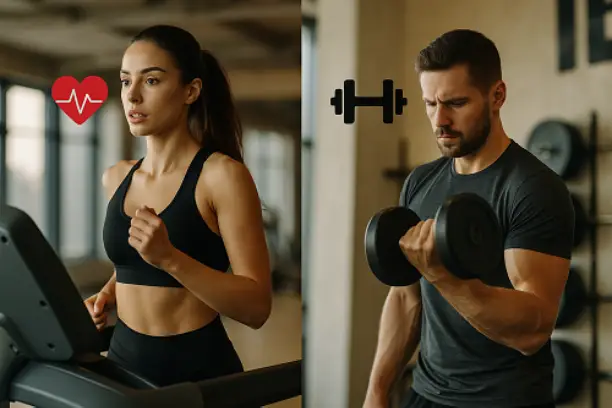
When it comes to losing fat, the fitness world often splits into two camps: cardio lovers and strength training enthusiasts. Both forms of exercise offer unique benefits, but which one truly reigns supreme in the battle against body fat? The truth is, both cardio and strength training play important roles in fat loss—but they work in different ways. Let’s explore how each one contributes to your goals and how to use them together effectively.
Understanding Fat Loss
Before we compare workouts, it's important to know how fat loss actually works.
Fat loss isn’t just about sweating—it’s about creating a calorie deficit. When your body uses more energy than it takes in through food, it starts tapping into fat stores to make up the difference. This can be achieved through exercise, improved nutrition, or ideally, both.

Cardio: The Traditional Fat-Burning Hero
Cardio has long been the go-to workout for people looking to lose weight fast. Whether it’s running on a treadmill or spinning in a cycle class, cardio gets your heart rate up and calories burning. Cardiovascular exercises include activities like running, cycling, swimming, and HIIT (high-intensity interval training). These workouts elevate your heart rate and burn a significant number of calories during the session. But does it hold up as the best fat-loss method? Let's take a look.

- Pros of Cardio for Fat Loss: Cardio exercises can deliver a powerful calorie burn in a relatively short amount of time, making them effective for jumpstarting fat loss.
- High Calorie Burn - Cardio burns more calories per session than strength training, especially in the short term.
- Heart Health - Improves cardiovascular health and endurance.
- Quick Results - Great for people looking to jump-start weight loss.
- Limitations: While cardio can burn calories quickly, the effect doesn’t always last once the workout is over—and overdoing it might work against your muscle gains.
- Temporary Burn - Most of the calorie burn stops after the workout ends.
- Muscle Loss Risk - Excessive cardio with insufficient strength training can lead to muscle loss, especially on low-calorie diets.
Strength Training: The Underrated Fat-Burning Engine
Often overlooked in fat-loss conversations, strength training is actually a powerhouse when it comes to long-term results.
Unlike cardio, which targets immediate calorie burn, strength training works behind the scenes to build lean muscle—and that changes your metabolism for the better.
Strength training includes resistance exercises like weightlifting, bodyweight workouts, and resistance bands. While it may not burn as many calories during the workout, its long-term effects are powerful.

- Pros of Strength Training for Fat Loss: More muscle means more calories burned at rest. Strength training not only shapes your body but also keeps your metabolism revved up even after you’ve left the gym.
- Increased Metabolism - Builds muscle, which burns more calories at rest.
- Afterburn Effect - Triggers EPOC (excess post-exercise oxygen consumption), meaning your body burns calories even after the workout ends.
- Improved Body Composition - Helps maintain or gain lean muscle, giving a toned look even at lower body weights.
- Limitations: Building muscle takes time and patience, and without proper form or planning, the risk of injury can increase.
- Slower Immediate Results - Weight loss may appear slower due to muscle gain.
- Technique Matters - Requires proper form and knowledge to avoid injury.
The Winner: Why You Should Combine Both
So, is one method truly better? The answer: not really.
Instead of choosing one over the other, the smartest approach is combining cardio and strength training.
Cardio and strength training are both effective in their own ways, but the magic really happens when you use them together. The combination offers the fastest and most sustainable path to fat loss. Here’s why:

- Sustainable Fat Loss: Cardio helps you burn calories now; strength training helps you burn calories later.
- Balanced Fitness: You gain both endurance and muscle strength.
- Better Long-Term Results: More muscle = better metabolism = easier to keep fat off for good.
Sample Weekly Plan
Here’s a sample plan to get you started with a balanced fitness routine that mixes strength and cardio for optimal fat-burning results:

- 🟩 Monday – Full-Body Strength Training:
- Focus: Compound movements to build strength and engage multiple muscle groups.
- Workout:
1. Warm-up: 5–10 minutes brisk walking or dynamic stretching
2. Squats – 4 sets of 10 reps
3. Push-Ups – 3 sets of 12 reps (modify if needed)
4. Bent-Over Dumbbell Rows – 3 sets of 10 reps
5. Dumbbell Shoulder Press – 3 sets of 10 reps
6. Plank – 3 x 30 seconds hold
7. Cool down: Stretching or foam rolling
- 🟦 Tuesday – Steady-State Cardio:
- Focus: Burn calories and improve cardiovascular endurance.
- Workout Options (Pick One):
1. 30–45 minutes of moderate jogging
2. 45 minutes brisk walking outdoors or on a treadmill
3. 45 minutes cycling (outdoors or stationary bike)
4. 30 minutes of swimming at a moderate pace
- 🟩 Wednesday – Lower Body Strength Training:
- Focus: Build lower body muscle and stimulate metabolism.
- Workout:
1. Warm-up: Leg swings, glute bridges, light jogging
2. Deadlifts – 4 sets of 8 reps
3. Walking Lunges – 3 sets of 12 reps per leg
4. Bulgarian Split Squats – 3 sets of 10 reps per leg
5. Calf Raises – 3 sets of 15 reps
6. Side Planks – 2 x 30 seconds per side
7. Cool down and stretching
- 🟥 Thursday – HIIT (High-Intensity Interval Training):
- Focus: Torch fat with short bursts of intense effort followed by brief rest.
- Workout (No Equipment Example): Perform each exercise for 40 seconds, rest 20 seconds, repeat the whole circuit 3–4 times:
1. Jump Squats
2. Mountain Climbers
3. Burpees
4. High Knees
5. Push-Up to Plank
6. Jumping Jacks
Total time: 20–30 minutes
Cool down: Deep breathing and stretching
- 🟨 Friday – Rest or Active Recovery:
- Focus: Allow your muscles to recover and reduce fatigue.
- Suggestions:
1. 20–30 minute walk
2. Gentle yoga or stretching session
3. Light swimming
4. Foam rolling or massage
- 🟩 Saturday – Upper Body Strength Training:
- Focus: Build lean muscle in your arms, chest, shoulders, and back.
- Workout:
1. Warm-up: Arm circles, light cardio
2. Bench Press or Push-Ups – 4 sets of 10 reps
3. Pull-Ups or Assisted Pull-Ups – 3 sets of 8 reps
4. Dumbbell Shoulder Press – 3 sets of 10 reps
5. Dumbbell Bicep Curls – 3 sets of 12 reps
6. Triceps Dips – 3 sets of 10 reps
7. Russian Twists – 3 sets of 20 reps (10 each side)
Cool down: Stretch chest, shoulders, and arms
- 🟦 Sunday – Low-Intensity Cardio or Rest:
- Focus: Keep your body moving lightly or take full rest depending on energy levels.
- Options:
1. 30–45 minute walk in nature or on a treadmill
2. Easy cycling or swimming
3. Light yoga or mobility work
4. Full rest day if needed
Conclusion
At the end of the day, fat loss isn't about picking one type of exercise over another—it's about finding a smart, sustainable mix.
Use cardio to burn calories and improve heart health. Use strength training to build muscle and increase your metabolism. When combined with good nutrition, sleep, and consistency, this balanced approach will get you the results you want.
Remember: Fat loss starts in the kitchen, is powered by consistent workouts, and is sustained by smart lifestyle choices.






